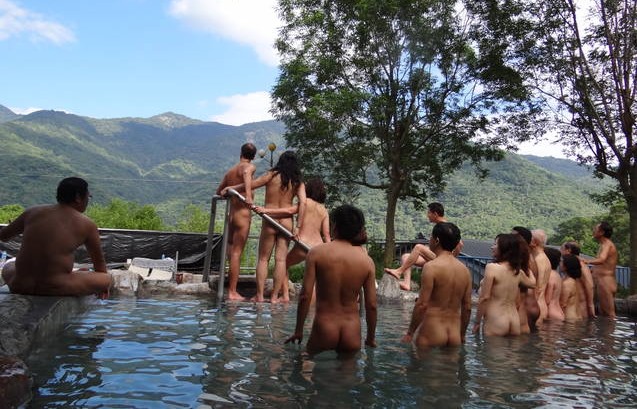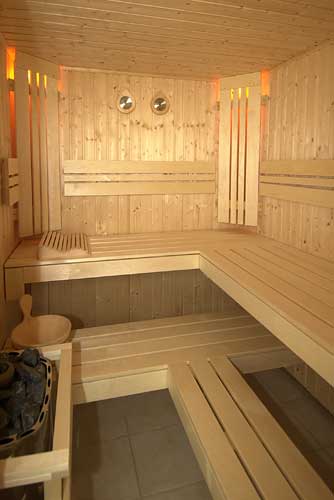|
Freikörperkultur
(''FKK'') is a social and health culture that originated in the German Empire, with its beginnings historically rooted in the social movement of the late 19th century. , meaning , promotes both the health benefits of nudity—such as exposure to light, air, and sun—as well as a broader aim to reform life and society. It is partly associated with the culture of nudity, particularly naturism and nudism, which involve communal nudity among individuals and families during leisure time, sports, and everyday life. By the 20th century, the culture of communal open-air nudity in the 'great outdoors' emerged in Germany as a response to the unhealthy lifestyles associated with industrial Urbanization, urban living. Recognised for its public health benefits, the movement promoted nudity in light, air, and sun as a means of enhancing physical vitality and mental Relaxation (psychology), relaxation, offering relief from the stresses and anxieties of the Industrial Age. Today, there are ... [...More Info...] [...Related Items...] OR: [Wikipedia] [Google] [Baidu] |
Naturism
Naturism is a lifestyle of practicing non-sexual social nudity in private and in public; the word also refers to the cultural movement which advocates and defends that lifestyle. Both may alternatively be called nudism. Though the two terms are broadly interchangeable, ''nudism'' emphasizes the practice of nudity, whilst ''naturism'' highlights an attitude favoring harmony with nature and respect for the environment, into which that practice is integrated. That said, naturists come from a range of philosophical and cultural backgrounds; there is no single naturist ideology. Ethical or philosophical nudism has a long history, with many advocates of the benefits of enjoying nature without clothing. At the turn of the 20th century, organizations emerged to promote social nudity and to establish private Campsite, campgrounds and Naturist resort, resorts for that purpose. Since the 1960s, with the acceptance of public places for clothing-optional recreation, individuals who do not i ... [...More Info...] [...Related Items...] OR: [Wikipedia] [Google] [Baidu] |
Lebensreform
''Lebensreform'' (; 'life reform' in English) is a German term that serves as an umbrella for various social reform movements that have emerged since the mid-19th century, particularly originating from Germany and Switzerland. In its early days, these movements were predominantly supported by the burgher class (''Bürgerstand'', urban residents), particularly the urban intellectuals, and were characterised by common features such as the critique of industrialisation, materialism, and urbanisation, coupled with a desire to return to a natural state of living. The objectives of ''Lebensreform'' included the promotion of a natural and healthy lifestyle to counter the detrimental effects of these factors on health and overall well-being. Common practices associated with the movement encompassed vegetarianism (advocating for a diet free of meat, typically motivated by ethical, health, and environmental reasons), naturopathy (the use of natural remedies for healing), naturism ( ... [...More Info...] [...Related Items...] OR: [Wikipedia] [Google] [Baidu] |
International Naturist Federation
The International Naturist Federation (INF), also known as and , is the global umbrella organisation representing official national naturist societies or associations. Membership The INF is composed of representatives from national naturist organisations, with federation rules allowing only one national society per country to hold membership. To work around this rule, the French and English-speaking Canadian societies formed a partnership to participate in the INF. Some national federations have independent youth organisations that are not directly affiliated with the INF. At the European level, youth representatives (European Naturist Youth – ENY, a committee of the INF mandated to promote naturism among Europeans aged 14 to 27) have elected a Youth Committee to liaise with the INF and its subcommittee, the European Naturist Commission (EuNat). Its role is to coordinate events and promote communication and exchange among young naturists. INF rules allow individuals to ob ... [...More Info...] [...Related Items...] OR: [Wikipedia] [Google] [Baidu] |
James Burnett, Lord Monboddo
James Burnett, Lord Monboddo (baptised 25 October 1714 – 26 May 1799) was a Scottish judge, scholar of linguistic evolution, philosopher and deist. He is most famous today as a founder of modern comparative historical linguistics. In 1767, he became a judge in the Court of Session. As such, Burnett adopted an honorary title based on the name of his father's estate and family seat, Monboddo House. Monboddo was one of a number of scholars involved at the time in development of early concepts of biological evolution. Some credit him with anticipating in principle the idea of natural selection that was read by (and acknowledged in the writings of) Erasmus Darwin. Charles Darwin read the works of his grandfather Erasmus and later developed the ideas into a scientific theory. Early years James Burnett was born in 1714 at Monboddo House in Kincardineshire, Scotland. After his primary education at the parish school of Laurencekirk, he studied at Marischal College, Aberdeen, from ... [...More Info...] [...Related Items...] OR: [Wikipedia] [Google] [Baidu] |
Nude Beaches
A nude beach, sometimes called a clothing-optional or free beach, is a beach where users are at liberty to be nude. Nude beaches usually have mixed bathing. Such beaches are usually on public lands, and any member of the public is allowed to use the facilities without membership in any movement or subscription to any personal belief. The use of the beach facilities is normally anonymous. Unlike a naturist resort or facility, there is normally no membership or vetting requirement for the use of a nude beach. The use of nude beach facilities is usually casual, not requiring pre-booking. Nude beaches may be official (legally sanctioned), unofficial (tolerated by residents and law enforcement), or illegal. The number of nude beaches in some countries is relatively low, and they are generally located some distance away from the city. Access is at times more difficult than at a regular beach and the facilities at these beaches tend to be very basic with a few notable exceptions. In ot ... [...More Info...] [...Related Items...] OR: [Wikipedia] [Google] [Baidu] |
Public Nudity
Nudity is the state of being in which a human is without clothing. While estimates vary, for the first 90,000 years of pre-history, anatomically modern humans were naked, having lost their body hair, living in hospitable climates, and not having developed the crafts needed to make clothing. As humans became behaviorally modern, body adornments such as jewelry, tattoos, body paint and scarification became part of non-verbal communications, indicating a person's social and individual characteristics. Indigenous peoples in warm climates used clothing for decorative, symbolic or ceremonial purposes but were often nude, having neither the need to protect the body from the elements nor any conception of nakedness being shameful. In many societies, both ancient and contemporary, children might be naked until the beginning of puberty. Women may not cover their breasts due to the association with nursing babies more than with sexuality. In the ancient civilizations of the Medit ... [...More Info...] [...Related Items...] OR: [Wikipedia] [Google] [Baidu] |
J32 619 »Nudistička Plaža«
J3, J03, J 3 or J-3 may refer to: Roads * County Route J3 (California) * Malaysia Federal Route J3 Submarines * Junsen type submarine * HMAS J3, an Australian submarine Aircraft * Junkers J 3, a German Junkers aircraft * J-3, a U.S. Navy airship * Ishikawajima-Harima J3, turbojet engine * Piper J-3, a 1938 light aircraft Other uses * J3 perturbation, gravitational force caused by an imperfect symmetry north–south of an object being orbited * J3 Operations Directorate, part of the US Joint Chiefs of Staff * GS&WR Class J3, an Irish steam locomotive * JAC J3, a subcompact car produced by JAC Motors * Janko group J3, in mathematics * Eupheme (temporarily designated S/2003 J 3), a satellite of Jupiter * J3 League, Japanese football league * Northwestern Air IATA code * J03: acute tonsillitis ICD-10 code * Triangular cupola, Johnson Solid number 3 * Samsung Galaxy J3, a smartphone by Samsung * J3 battlecruiser, a British military vessel design from 1920s* LNER Class J3 ... [...More Info...] [...Related Items...] OR: [Wikipedia] [Google] [Baidu] |
Sauna
A sauna (, ) is a room or building designed as a place to experience dry or wet heat sessions or an establishment with one or more of these facilities. The steam and high heat make the bathers perspire. A thermometer in a sauna is used to measure temperature; a hygrometer can be used to measure levels of humidity or steam. Infrared therapy is often referred to as a type of sauna, but according to the Finnish sauna organizations, infrared is not a sauna. History Areas such as the rocky Orkney islands of Scotland have many ancient stone structures for normal habitation, some of which incorporate areas for fire and bathing. It is possible some of these structures also incorporated the use of steam in a way similar to the sauna, but this is a matter of speculation. The sites are from the Neolithic age, dating to approximately 4000 B.C.E. Archaeological sites in Greenland and Newfoundland have uncovered structures very similar to traditional Scandinavian farm saunas, some with b ... [...More Info...] [...Related Items...] OR: [Wikipedia] [Google] [Baidu] |
Hanover
Hanover ( ; ; ) is the capital and largest city of the States of Germany, German state of Lower Saxony. Its population of 535,932 (2021) makes it the List of cities in Germany by population, 13th-largest city in Germany as well as the fourth-largest in northern Germany after Berlin, Hamburg and Bremen. Hanover's urban area comprises the towns of Garbsen, Langenhagen and Laatzen and has a population of about 791,000 (2018). The Hanover Region has approximately 1.16 million inhabitants (2019) and is the largest in the Hannover–Braunschweig–Göttingen–Wolfsburg Metropolitan Region, Hanover–Braunschweig–Göttingen–Wolfsburg Metropolitan Region, the List of EU metropolitan areas by GDP, 17th biggest metropolitan area by GDP in the European Union. Before it became the capital of Lower Saxony in 1946, Hanover was the capital of the Principality of Calenberg (1636–1692), the Electorate of Hanover (1692–1814), the Kingdom of Hanover (1814–1866), the Province of Hannove ... [...More Info...] [...Related Items...] OR: [Wikipedia] [Google] [Baidu] |
Public Bathing
Public baths originated when most people in population centers did not have access to private bathing facilities. Though termed "public", they have often been restricted according to gender, religious affiliation, personal membership, and other criteria. In addition to their hygienic function, public baths have also been social meeting places. They have included saunas, massages, and other relaxation therapies, as are found in contemporary day spas. As the percentage of dwellings containing private bathrooms has increased in some societies, the need for public baths has diminished, and they are now almost exclusively used recreationally. History Indus Valley Civilization Some of the earliest public baths are found in the ruins in of the Indus Valley civilization. According to John Keay, the "Great Bath, Mohenjo-daro, Great Bath" of Mohenjo-daro, Mohenjo Daro in present-day Pakistan was the size of 'a modest municipal swimming pool', complete with stairs leading down to th ... [...More Info...] [...Related Items...] OR: [Wikipedia] [Google] [Baidu] |
Central Europe
Central Europe is a geographical region of Europe between Eastern Europe, Eastern, Southern Europe, Southern, Western Europe, Western and Northern Europe, Northern Europe. Central Europe is known for its cultural diversity; however, countries in this region also share some historical and cultural similarities. The region is variously defined, but it’s minimum definition could be considered of consisting of Austria, Bosnia and Herzegovina, Croatia, the Czech Republic, eastern France, Germany, Liechtenstein, Luxembourg, Poland, Slovakia, Slovenia and Switzerland. But also the Baltic States, the Alsace in north-east France, and South Tyrol, northern Belluno , and Friuli-Venezia Giulia in north-east Italy are culturally usually considered to be part of Central Europe. From the early 16th century until the early 18th century, parts of Croatia and Hungary were ruled by the Ottoman Empire. During the 17th century, the empire also occupied southern parts of present-day Slovakia. During ... [...More Info...] [...Related Items...] OR: [Wikipedia] [Google] [Baidu] |






